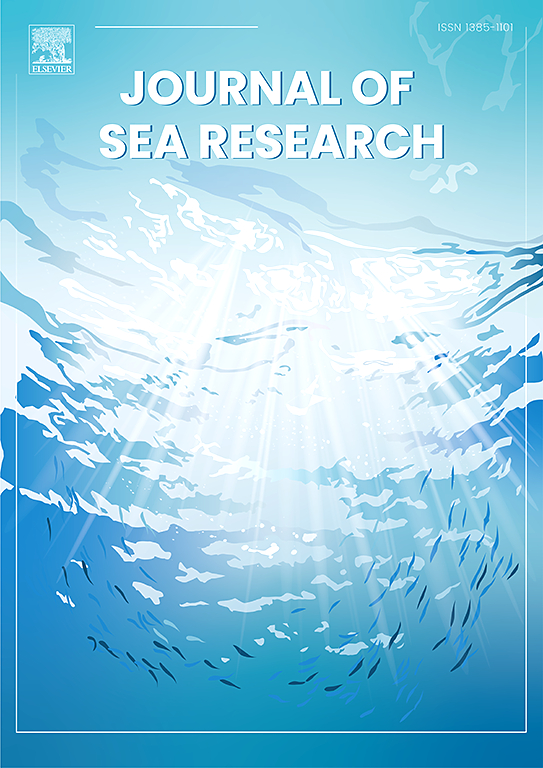从监狱到自由:了解鱼类分类网格的大小选择
IF 2.9
4区 地球科学
Q2 MARINE & FRESHWATER BIOLOGY
引用次数: 0
摘要
刚性分拣网在全球海底拖网渔业中使用。然而,在一些渔场,如巴伦支海的海底拖网渔场,人们发现它们释放了大量目标尺寸的渔获物,同时保留了太多尺寸较小的鱼。一些研究已经记录了这个问题,但对这些结果的确切原因仍然缺乏深入的理解。因此,本研究调查了在实验室对鳕鱼(Gadus morhua)、黑线鳕(Melanogrammus aeglefinus)和红鱼(sebases spp.)进行的所谓的穿透实验是否能阐明这一问题。基于这些结果的预测模型,可以更详细地了解这些物种的捕捞试验的大小选择模式。模型显示,目标大小的鳕鱼和黑线鳕的意外释放之所以发生,是因为进入拖网的鱼中有很大一部分挤在分拣网格条之间以逃脱。对于红鱼,选择性曲线上约85%的贡献可归因于红鱼通过网格条间距挤压自己以逃脱,而我们认为它们不挤压(约15%)。体型过小的鳕鱼和黑线鳕的意外滞留可以用这样一个事实来解释,即许多鱼以次优的身体方向与网格接触。所采用的方法使我们能够详细了解鱼类和分选网格之间的相互作用,并有可能应用于了解拖网渔业中使用的其他选择性装置的性能。本文章由计算机程序翻译,如有差异,请以英文原文为准。
From behind bars to freedom: understanding the size selection of fish sorting grids
Rigid sorting grids are used in demersal trawl fisheries globally. However, in some fisheries, such as the Barents Sea demersal trawl fishery, they have been found to release large quantities of target-sized catch while simultaneously retaining too many undersized fish. Several studies have documented this issue but an in-depth understanding regarding the exact reasons for these results is still lacking. Thus, the present study investigated whether so-called fall-through experiments conducted in the laboratory for cod (Gadus morhua), haddock (Melanogrammus aeglefinus) and redfish (Sebastes spp.) could shed light on this matter. Predictive models based on these results, enabled a more detailed understanding of the size selection pattern from fishing trials for these species. The models revealed that the unintended release of target-sized cod and haddock occurs because a significant fraction of the fish entering the trawl squeezes themselves between the sorting grid bars to escape. For redfish, approximately 85 % of the contribution on the selectivity curve could be attributed to redfish squeezing themselves through the grid bar spacings to escape compared to when we considered that they do not squeeze (approximately 15 %). The unintended retention of undersized cod and haddock could be explained by the fact that many fish made contact with the grid with a suboptimal body orientation. The method applied enabled us to gain detailed insight into the interaction between fish and sorting grids and could potentially be applied to gain an understanding of the performance of other selectivity devices used in trawl fisheries.
求助全文
通过发布文献求助,成功后即可免费获取论文全文。
去求助
来源期刊

Journal of Sea Research
地学-海洋学
CiteScore
3.20
自引率
5.00%
发文量
86
审稿时长
6-12 weeks
期刊介绍:
The Journal of Sea Research is an international and multidisciplinary periodical on marine research, with an emphasis on the functioning of marine ecosystems in coastal and shelf seas, including intertidal, estuarine and brackish environments. As several subdisciplines add to this aim, manuscripts are welcome from the fields of marine biology, marine chemistry, marine sedimentology and physical oceanography, provided they add to the understanding of ecosystem processes.
 求助内容:
求助内容: 应助结果提醒方式:
应助结果提醒方式:


